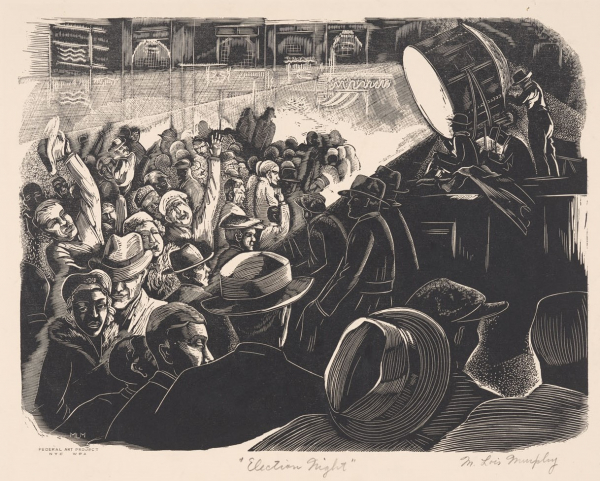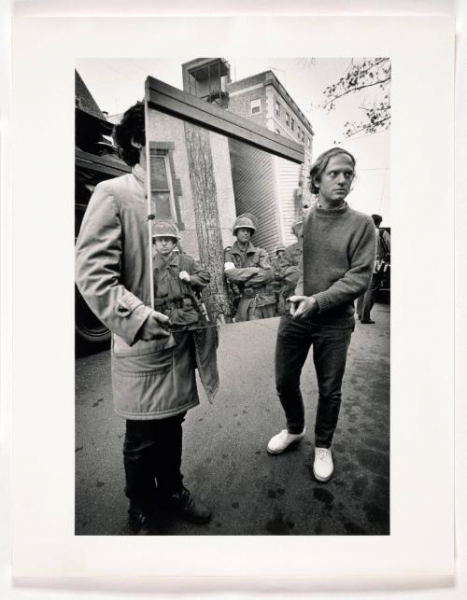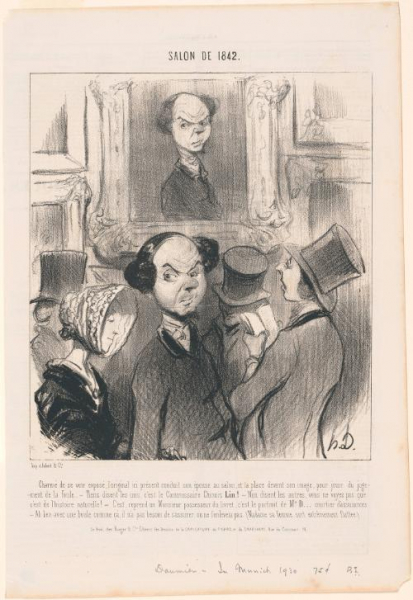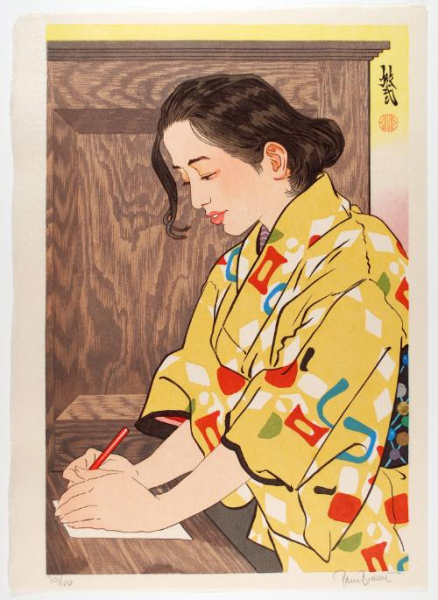
Politics on Film and Art
- This event has passed.
This fall, the Ackland Film Forum, with our partners in UNC-Chapel Hill’s Film Studies Program, presents Politics on Film, a timely series featuring five American films that explore the rise to political fame and power. For each film, we have also chosen an artwork from the Ackland’s collection to accompany it. The works offer a good jumping off point for asking questions about and excavating the themes depicted in and aesthetic choices of these five politics films. So instead of the usual movie trailers, we hope you’ll take a little time to look at the art, ask more questions, and start discussions with your fellow film-goers before the lights go down.
October 1
A Face in the Crowd (Elia Kazan, 1957)
and
Election Night (Minnie Lois Murphy, 1935-37)
How do the film and this print convey ideas about anonymity and fame? About singularity and the collective? What or who does the spotlight seen in the print or in the movie shine a light on? Are viewers a part of the crowds depicted in the film and in this artwork?
October 8
Medium Cool (Haskell Wexler, 1969)
and
Mirror Image, Peace Demonstration, New Haven, 1970 (Burk Uzzle, 1970)
Where do you see evidence in this photograph of the realistic or documentary and the artificial? How are these differences conveyed in the film? How does seeing or not seeing the camera in the film and photograph influence your interpretation of each? Do the photograph and film make you think differently about the documentation of a particular time in politics?
October 15
Being There (Hal Ashby, 1979)
and
Delighted To Find Himself on Show… (Honoré Daumier, 1842)
How do the print and the film play on the idea of the double image? How does context change how the audience views the subjects of the print and film? How does context change how the people around the protagonists view them?
October 22
Election (Alexander Payne, 1999)
and
Flowers of A Hundred Years: Votes for Women [of 1950] (Paul Binnie, 2015)
How does seeing the moments when ballots are cast help viewers connect with the election process in both the film and print? How do the visual elements – how the people are portrayed, their clothing, and their surroundings – ground the works in their particular historical contexts?
October 29
Chisholm ’72: Unbought and Unbossed (Shola Lynch, 2004)
and
Women in America Earn Only 2/3 of What Men Do, from Portfolio Compleat (Guerilla Girls, 1985)
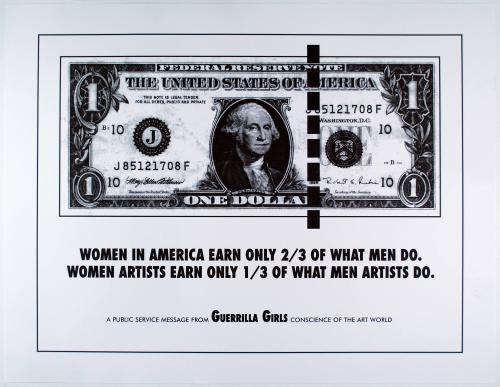
How do both the film and artwork use found items to create a narrative? How does the visual language of the film and artwork make it accessible to a wide audience? How does that relate to the artists’/filmmaker’s message and the subject(s) they are representing?
IMAGE CREDITS
Minnie Lois Murphy, American, 1901-1962, “Election Night,” c. 1935-37, wood engraving, allocated by the U.S. Government, commissioned through the New Deal art projects, L87.55.1119.
Burk Uzzle, American, b. 1938, “Mirror Image, Peace Demonstration, New Haven, 1970,” 1970, gelatin silver print, image: 11 7/8 × 7 7/8 in. (30.2 × 20 cm), sheet: 13 15/16 × 11 in. (35.4 × 28 cm), Gift of Charles Weinraub and Emily Kass, 2008.3.23.
Honoré Daumier, French, 1808-1879, “Delighted to Find Himself of Show… (Charmé De Se Voir Exposé…),” 1842l, lithograph, 14 1/4 x 9 13/16 in. (36.2 x 25 cm), Burton Emmett Collection, 58.1.52.
Paul Binnie, Scottish, b. 1967, “Flowers of a Hundred Years: Votes for Women [of 1950], (Hyakunen no Hana: Fujin no Ippyo),” 2015, Polychrome woodblock print on paper, sheet: 18 1/2 × 13 1/16 in. (47 × 33.2 cm), The William A. Whitaker Foundation Art Fund, 2017.11.20.
Guerilla Girls, American, active since 1985, “Women in America earn only 2/3 of what men do, from Portfolio Compleat,” 1985, offset lithograph, sheet: 17 x 22 in. (43.2 x 55.9 cm), Ackland Fund, 2014.16.6.

Additional Event Details
Events Navigation


